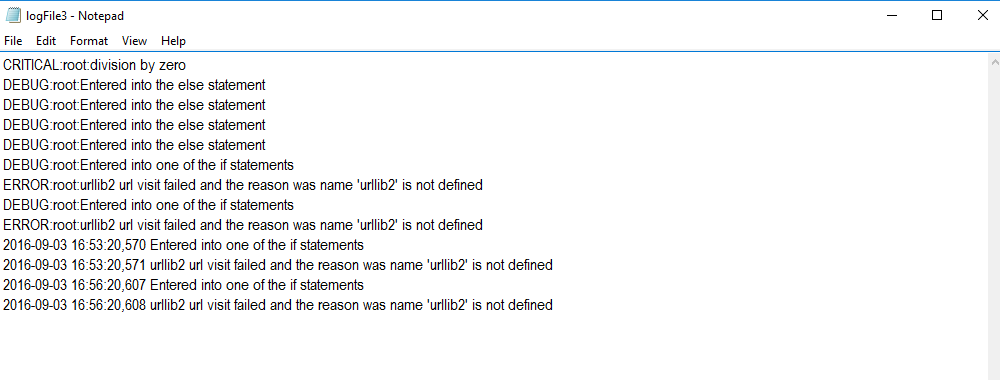

The logging module will then use your custom formatter to format the log messages, including the timestamp, based on the specified time format. These newer formatting options are supported, but exploring them is outside the scope of this tutorial: see Using particular formatting styles throughout your application for more information. Flask uses standard Python logging objects with a default configuration consisting of a StreamHandler with a simple Formatter. the second thing is you can make the logger write to a file and every file will create a new object but will write to the same file. The logging.Formatter class takes two arguments: fmt for the log message format (including placeholders for the timestamp), and datefmt for the custom time format.īy using this approach, you can easily customize the time format according to your preference and requirements. This is for backwards compatibility: the logging package pre-dates newer formatting options such as str.format() and string.Template. I have two solutions for you, first, if you want to use a specific object you can add it to every constructor to get a logger object. In this example, the time_format variable is set to "%Y-%m-%d %H:%M:%S", which will produce a timestamp in the format "YYYY-MM-DD HH:MM:SS". The simplest example: > import logging > logging. Logger.critical('This is a critical message') The key benefit of having the logging API provided by a standard library module is that all Python modules can participate in logging, so your application log can include your own messages integrated with messages from third-party modules. Logger.warning('This is a warning message') import logging formatter logging.Formatter('(asctime)s (appname)s : (message)s') tFormatter(formatter) logger. # Now you can use the logger to log messages with your custom time format formatter logging.Formatter('(asctime)s : (message)s') and I want to add a new field called appname which will have a different value in each script that contains this formatter. # Set the log level (optional, can be DEBUG, INFO, WARNING, ERROR, CRITICAL) Logger = logging.getLogger('custom_logger') import sys import customlogger import logging class SubClass (object): def init (self): NOK (no idea why since by default (no name parameter), it should return the root logger) log logging.getLogger () log.

# Create a logger and set the custom formatter # Create a custom formatter with your desired time formatįormatter = logging.Formatter(fmt='%(asctime)s - %(levelname)s - %(message)s', datefmt=time_format)


 0 kommentar(er)
0 kommentar(er)
